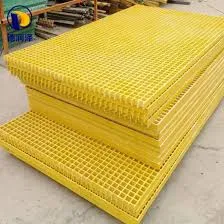
-
 Afrikaans
Afrikaans -
 Albanian
Albanian -
 Amharic
Amharic -
 Arabic
Arabic -
 Armenian
Armenian -
 Azerbaijani
Azerbaijani -
 Basque
Basque -
 Belarusian
Belarusian -
 Bengali
Bengali -
 Bosnian
Bosnian -
 Bulgarian
Bulgarian -
 Catalan
Catalan -
 Cebuano
Cebuano -
 China
China -
 China (Taiwan)
China (Taiwan) -
 Corsican
Corsican -
 Croatian
Croatian -
 Czech
Czech -
 Danish
Danish -
 Dutch
Dutch -
 English
English -
 Esperanto
Esperanto -
 Estonian
Estonian -
 Finnish
Finnish -
 French
French -
 Frisian
Frisian -
 Galician
Galician -
 Georgian
Georgian -
 German
German -
 Greek
Greek -
 Gujarati
Gujarati -
 Haitian Creole
Haitian Creole -
 hausa
hausa -
 hawaiian
hawaiian -
 Hebrew
Hebrew -
 Hindi
Hindi -
 Miao
Miao -
 Hungarian
Hungarian -
 Icelandic
Icelandic -
 igbo
igbo -
 Indonesian
Indonesian -
 irish
irish -
 Italian
Italian -
 Japanese
Japanese -
 Javanese
Javanese -
 Kannada
Kannada -
 kazakh
kazakh -
 Khmer
Khmer -
 Rwandese
Rwandese -
 Korean
Korean -
 Kurdish
Kurdish -
 Kyrgyz
Kyrgyz -
 Lao
Lao -
 Latin
Latin -
 Latvian
Latvian -
 Lithuanian
Lithuanian -
 Luxembourgish
Luxembourgish -
 Macedonian
Macedonian -
 Malgashi
Malgashi -
 Malay
Malay -
 Malayalam
Malayalam -
 Maltese
Maltese -
 Maori
Maori -
 Marathi
Marathi -
 Mongolian
Mongolian -
 Myanmar
Myanmar -
 Nepali
Nepali -
 Norwegian
Norwegian -
 Norwegian
Norwegian -
 Occitan
Occitan -
 Pashto
Pashto -
 Persian
Persian -
 Polish
Polish -
 Portuguese
Portuguese -
 Punjabi
Punjabi -
 Romanian
Romanian -
 Russian
Russian -
 Samoan
Samoan -
 Scottish Gaelic
Scottish Gaelic -
 Serbian
Serbian -
 Sesotho
Sesotho -
 Shona
Shona -
 Sindhi
Sindhi -
 Sinhala
Sinhala -
 Slovak
Slovak -
 Slovenian
Slovenian -
 Somali
Somali -
 Spanish
Spanish -
 Sundanese
Sundanese -
 Swahili
Swahili -
 Swedish
Swedish -
 Tagalog
Tagalog -
 Tajik
Tajik -
 Tamil
Tamil -
 Tatar
Tatar -
 Telugu
Telugu -
 Thai
Thai -
 Turkish
Turkish -
 Turkmen
Turkmen -
 Ukrainian
Ukrainian -
 Urdu
Urdu -
 Uighur
Uighur -
 Uzbek
Uzbek -
 Vietnamese
Vietnamese -
 Welsh
Welsh -
 Bantu
Bantu -
 Yiddish
Yiddish -
 Yoruba
Yoruba -
 Zulu
Zulu
mandrel
The Versatile World of Mandrels An Essential Tool in Metalworking and Manufacturing
In the realm of metalworking and manufacturing, few tools are as versatile and essential as the mandrel. A mandrel, also known as a mandril or a supporting tool, is a device used to support, shape, or hold workpieces during various operations such as machining, molding, or fabricating. This article explores the types, applications, and significance of mandrels in industry.
Understanding Mandrels
At its core, a mandrel serves as a support framework around which materials can be manipulated. It can come in various shapes and sizes; for instance, cylindrical mandrels are commonly used in tube bending operations, while specialized mandrels are designed for more precise applications like holding gears during machining. Mandrels can be solid or hollow, depending on the needs of the operation. Some are adjustable, allowing for the accommodation of various diameters and shapes.
The construction of a mandrel typically involves materials such as steel or aluminum, providing the necessary strength and rigidity needed during operations. Depending on the specific requirements of the task at hand, a mandrel may also be designed to provide specific surface finishes or features, such as grooves for improved grip.
Types of Mandrels
There are multiple types of mandrels, each designed for specialized applications. Some of the most common types include
1. Expanding Mandrels These mandrels feature a mechanism that allows them to expand inside the workpiece, ensuring a tight fit. They are often employed in precision machining processes, such as bore finishing.
2. Fixed Mandrels These are static tools that hold a workpiece in place without any adjustment. They are reliable for repetitive tasks and are frequently used in assembly lines.
3. Tapered Mandrels These have a conical shape that allows for easy insertion and removal. They are particularly useful in applications requiring frequent changes of workpieces.
mandrel

Applications of Mandrels
Mandrels play a crucial role in various industrial applications. In the manufacturing sector, they are integral to pipe bending and shaping. When forming tubes or pipes, an expanding mandrel ensures that the material maintains its shape and does not collapse under stress.
In the automotive industry, mandrels are used extensively in the creation of component parts. For instance, when fabricating exhaust systems, mandrels help shape the pipes accurately, ensuring proper fittings and functionality. In the aerospace sector, highly specialized mandrels are used for forming large, complex structures, enabling the production of lightweight and strong components.
Additionally, in jewelry making and watch-making, small, precise mandrels are essential for shaping and finishing products to exact standards. Their capability to hold delicate materials securely while allowing for intricate work is unparalleled in the craft.
Significance Beyond Manufacturing
The significance of mandrels extends beyond direct manufacturing applications. They embody principles of precision, efficiency, and innovation. By enabling manufacturers to produce complex geometries and maintain high tolerances, mandrels contribute to the overall quality and durability of the finished product.
Furthermore, mandrels promote safety in the workplace. By securely holding workpieces, they reduce the risk of material slipping or being improperly secured, potentially causing accidents during machining operations.
Conclusion
In conclusion, mandrels are an indispensable tool in the fields of metalworking and manufacturing. Their versatility, robustness, and precision make them essential for a wide range of applications across various industries, from automotive to aerospace and even artisanal crafts. As manufacturing technologies continue to evolve, the design and application of mandrels are likely to adapt, ensuring that they remain at the forefront of innovation and efficiency in production processes. Understanding and utilizing mandrels correctly can significantly enhance productivity and product quality, making them truly vital to the industrial landscape.









